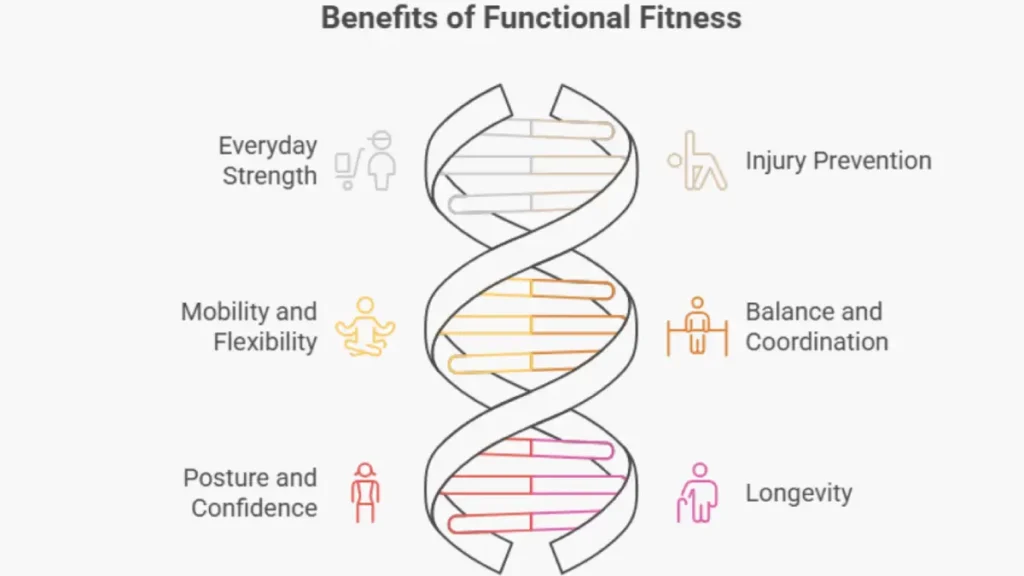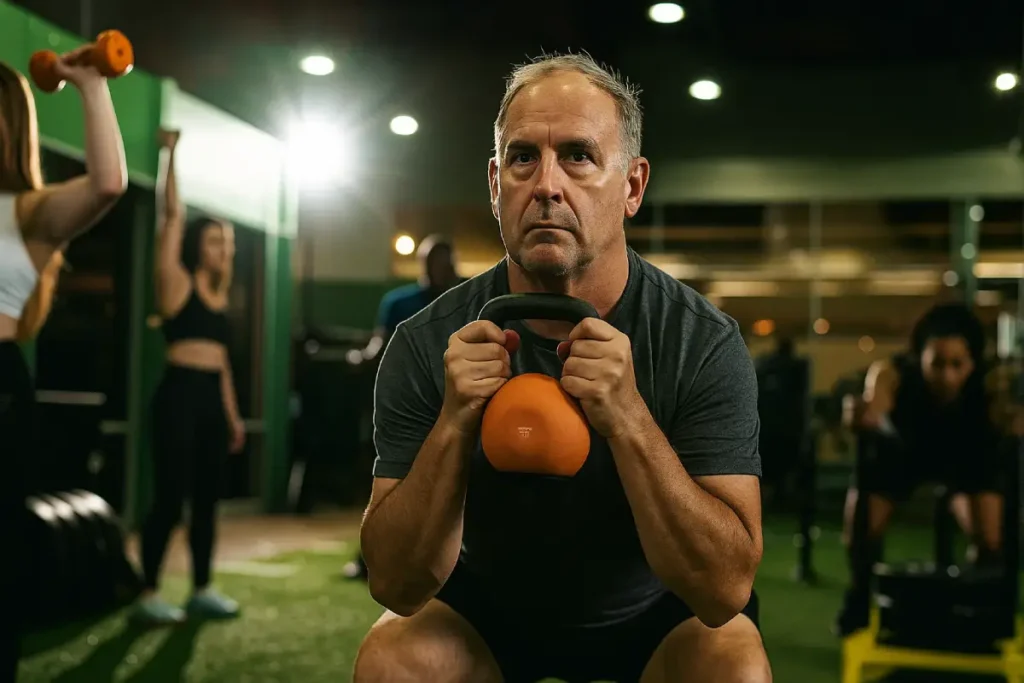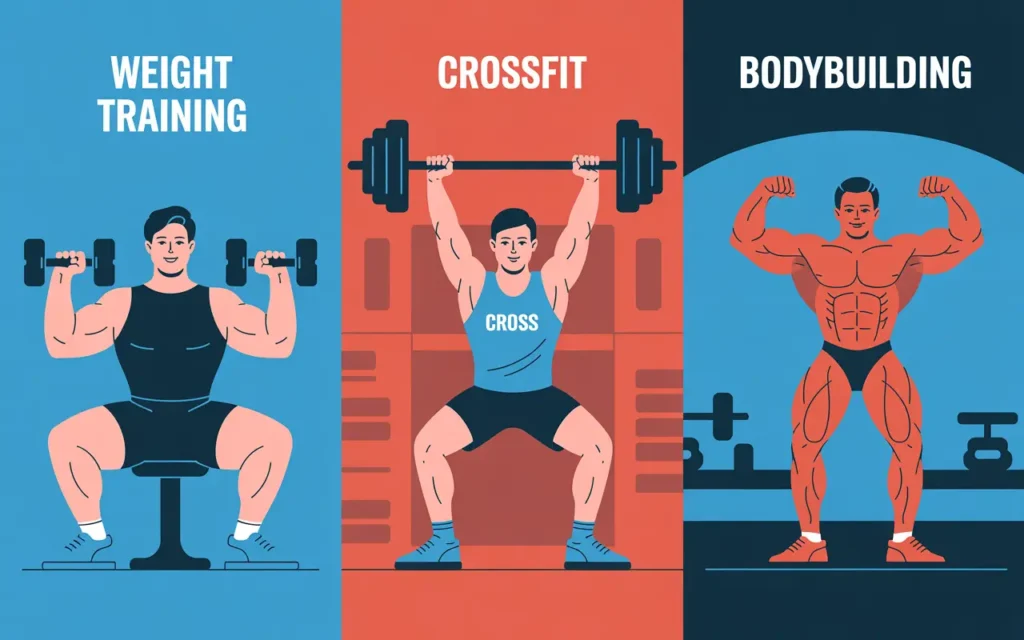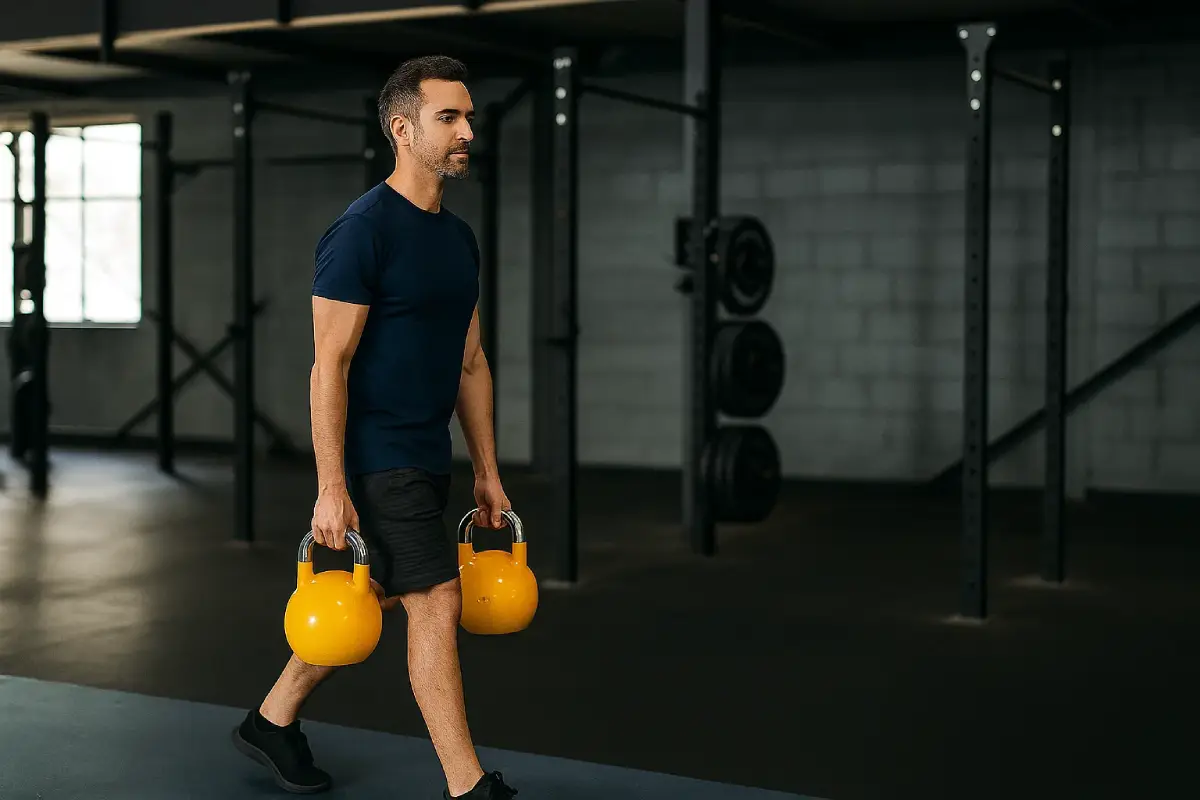I never realized how important the squats I was doing were until the day I tried to pick something up off the floor while carrying my child in my arms! In that moment, it hit me: fitness isn’t just about looking good at the gym. It’s about moving better in everyday life. That’s exactly what functional fitness is all about. This style of training prepares your body for real-life movements, helping you feel stronger, more mobile, and more capable in the moments that truly matter. If you’ve ever wanted exercise to pay off outside the gym, this type of training may be the key.
What Is Functional Fitness?
It consists of exercises designed to prepare your body for everyday movements. Instead of isolating a single muscle, it trains your muscles to work together. Think of squatting down to pick something off the floor, pushing open a heavy door, or climbing stairs. These are functional movements.
Traditional workouts often focus on appearance: bicep curls for bigger arms or leg extensions for toned thighs. Functional training, on the other hand, is performance-driven. It’s about making everyday activities easier and reducing the risk of injuries.
The Benefits of Functional Fitness

The appeal of functional fitness isn’t just in the gym, it’s in your daily life. Here’s what you gain when you make it part of your routine:
- Everyday strength – Carry groceries, move furniture, or play with your kids without aches.
- Injury prevention – By mimicking real-life movements, you train your joints, ligaments, and muscles to handle stress.
- Better mobility and flexibility – Less stiffness, easier movement, greater independence.
- Improved balance and coordination – Decreases the risk of falls, especially important as we age.
- Posture and confidence – Strengthening core muscles supports your spine and helps you move tall and proud.
- Longevity – supports the quality of life at every age.
It’s fitness that shows up when you need it most: climbing stairs, gardening, or lifting your grandchild.
Core Components of Functional Fitness
Functional fitness is built on five essential components. Here’s how each translates to daily life:
| Component | Why It Matters | Exercise Example |
|---|---|---|
| Strength | Lets you lift and carry without strain | Deadlift, Squat |
| Balance | Keeps you steady and prevents falls | Single-leg Deadlift |
| Mobility | Loosens joints and keeps movement pain-free | Hip Opener Stretch |
| Endurance | Helps you get through longer activities | Farmer’s Carry |
| Power | Builds quick, useful strength for real life | Medicine Ball Slam |
By focusing on all five, you create a body that doesn’t just look good but works efficiently.
Best Functional Fitness Exercises

You don’t need fancy equipment to start. Begin with your body weight, then add resistance as you progress.
1. Squats
Doing squats is like oiling the hinges on a door. Just as well-oiled hinges allow the door to open and close smoothly without strain, strong and practiced squats ensure your body can move efficiently and effortlessly, making everyday movements feel easier and reducing the risk of injury when lifting or bending.
2. Lunges
This exercise helps you balance and makes your legs stronger. It makes it easier to walk, go up stairs, and step over things. By working on one leg at a time, you can get better at staying steady. This will help you feel more confident when you walk on bumpy ground or do physical activities.
3. Plank
A plank engages nearly every muscle in the body but puts special emphasis on the core. A strong core stabilizes your spine, supports good posture, and helps you perform everyday tasks — from carrying your child to reaching overhead — without injury. It also prepares your body to transfer strength between the upper and lower body in real-life movement.
4. Deadlifts
Deadlifts teach your body how to hinge at the hips, which is the safest and most efficient way to pick up heavy objects. Training this pattern strengthens your glutes, hamstrings, and back; the muscles that protect you when lifting a suitcase, moving furniture, or even gardening. A strong hip hinge reduces the risk of back strain.
5. Push-ups
Push-ups produce strength in the chest, shoulders, and arms, muscles that support pushing in everyday life. Whether you’re shoving open a stuck door, moving a heavy box, or simply maintaining strong arms for lifting, push-ups reinforce a movement you’ll actually use. They also engage the core, making them a full-body functional exercise.
6. Step-ups
Step-ups replicate climbing stairs or stepping onto a curb. They build leg strength, train balance, and improve coordination. Practicing step-ups makes everyday actions — like going upstairs with groceries or hiking a trail — feel easier and safer, especially as you age.
7. Farmer’s Carry
The farmer’s carry trains grip strength, core stability, and endurance, all while simulating the act of carrying bags or luggage. Walking with weight in each hand forces your body to stabilize, teaching you to stay tall and avoid hunching. It’s one of the most practical movements for daily life because it directly prepares you for the physical demands of carrying loads.
These moves cover every major muscle group and prepare you for life outside the gym.
Functional Fitness vs Other Training Styles

Different training styles serve different purposes. Some focus on appearance, others on performance, and some on practical strength for daily life. Here’s how functional fitness compares to several popular methods:
| Training Style | Key Focus | How It Differs from Functional Fitness |
|---|---|---|
| Weight Training | Works one muscle group at a time | Functional fitness trains multiple muscles and joints together, building strength that translates to daily life. |
| CrossFit | Uses functional movements at very high intensity | Functional fitness uses similar movements but at a more approachable pace, prioritizing longevity and safe progress. |
| Bodybuilding | Focused on aesthetics and muscle size | Functional fitness emphasizes moving well and staying capable, filling gaps that bodybuilding may leave in real-world performance. |
How to Get Started with Functional Fitness
- Start small: Begin with squats, planks, and lunges.
- Use bodyweight first: Perfect form before adding weights.
- Mix into routines: Add functional movements to your current workouts.
- Progress gradually: Increase reps, sets, or resistance.
- Listen to your body: Form matters more than speed or weight.
- Safety first: If you’re over 40 or dealing with health concerns, check with your doctor.
As you progress, try adding kettlebells, resistance bands, or dumbbells for variety.
Who Is Functional Fitness For?
The answer is: everyone.
- Beginners: It’s easy to start without any equipment.
- Adults 40+: It helps you stay independent and reduces the risk of falling.
- Athletes: It improves your performance, agility, and resilience.
- Busy professionals: Do short, efficient workouts that have lasting effects.
- Seniors: Experience gentle but effective training to improve mobility and confidence.
No matter your age or fitness level, functional training adapts to you.
FAQs
Functional fitness is exercise that trains your body for real-life movements like bending, lifting, pushing, and pulling.
Strength, balance, mobility, endurance, and power, all essential for everyday movement.
Not quite. CrossFit uses functional movements but at a higher intensity. Functional fitness is more accessible and focused on everyday life.
Squats, lunges, planks, deadlifts, push-ups, step-ups, and carries are classic examples
Living the Benefits Every Day
Functional fitness isn’t about lifting the heaviest barbell or chasing a six-pack. It’s about moving better in life: climbing stairs without knee pain, carrying groceries with confidence, playing with your kids or grandkids without fear of injury.
Start with one exercise today. Add a second next week. Over time, the small steps build strength, confidence, and freedom. Remember: it’s never too late to move better, live longer, and feel stronger.
Follow Fitness Motion Lab on Facebook and Instagram for a daily dose of inspiration and exciting updates!

